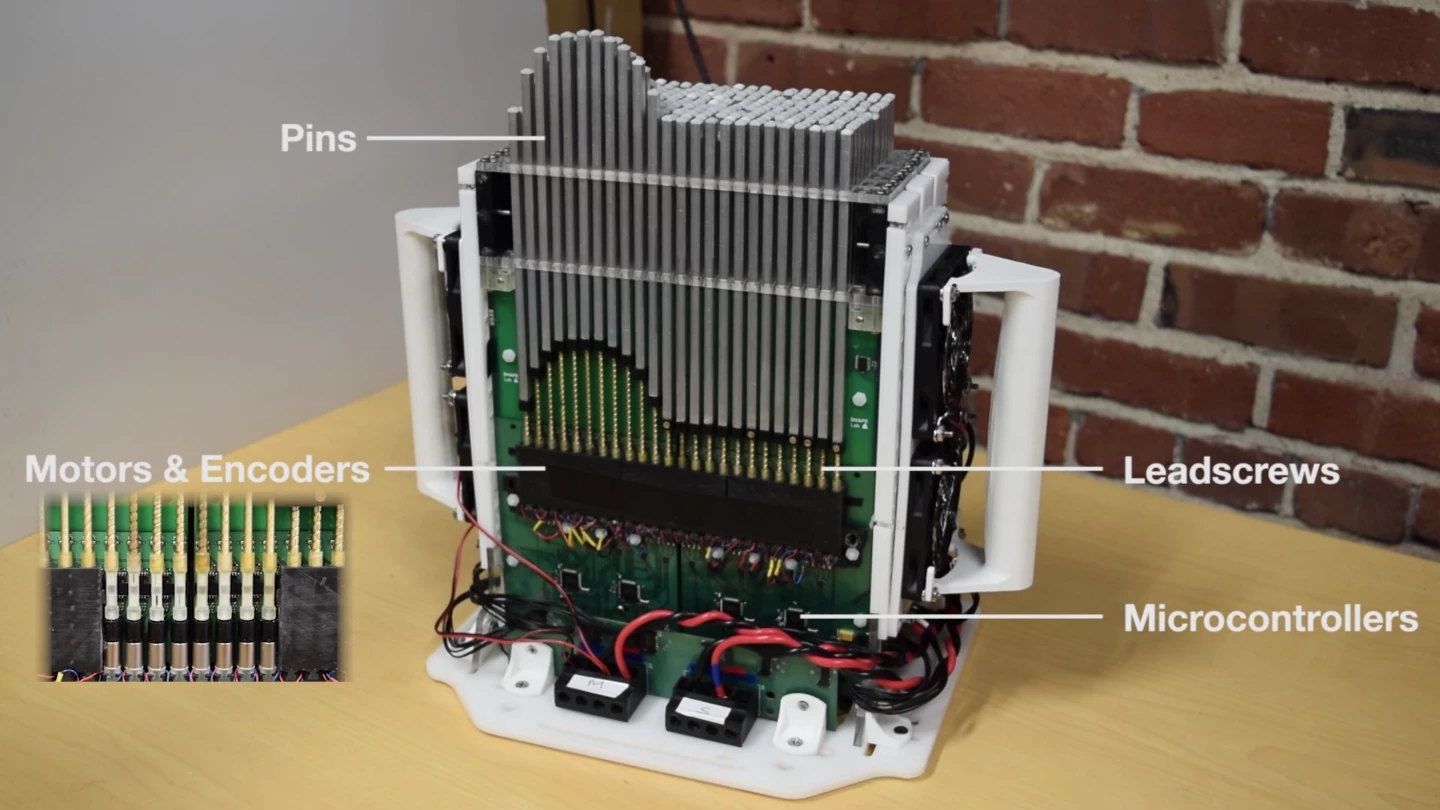Anyone who's played a full-scale VR game like the Zero Latency experience knows how insanely immersive and real this tech already feels. And the next step is to find a way for people to actually feel virtual objects. The shapeShip tabletop unit developed at Stanford is the latest device designed to bring the sense of touch to VR.
The most obvious way to provide haptic feedback from virtual objects is using some kind of suit, such as Disney's Force Jacket, which rapidly inflates and deflates small pouches that can provide the sensation of touching or being hit by an object.
Another way, under investigation by Stanford University's Shape lab, is to actually create an object in 3D that moves dynamically with the object in the VR simulation. The ShapeShift table uses an array of 7-mm-square rods in a matrix, which can each move up and down independently to create a topography that matches the item in the VR simulation.

It all works rather like one of those pin art boards that you stick your face in before realizing what else has probably been stuck in there. The motorized device can't produce free-floating objects that can be experienced from all sides, but it does allow a genuine tactile interaction with objects in the real world.
The small demonstration unit operates in fairly low resolution, and sits on wheels that allows the device to roll around, either to allow users to move virtual objects in VR or to give them impression of objects larger than the tactile surface.
It's easy to imagine this being done at higher and higher resolutions, enabling more and more complex shapes to be rendered for touch. There's also potential for the concept to be scaled up, too, with sections of the floor in a warehouse-sized VR setup popping up and down to give physical form to stairs, pillars, walls, narrow balancing beams or things you can hide behind for cover. We dread to think how it might be used in more adult applications.
Check out the shapeShift in the video below.
Source: Stanford Shape Lab








